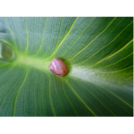
Students will explore the outdoor classroom in pairs looking for evidence of animal life and imagining what types of animals might live in and around the area.
- Subject:
- Life Science
- Material Type:
- Lesson Plan
- Author:
- Out Teach
- Date Added:
- 07/22/2021
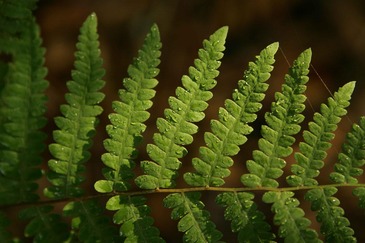

Students will explore the outdoor classroom in pairs looking for evidence of animal life and imagining what types of animals might live in and around the area.

Hello Readers, My name is Eddie Joo and I am the co-author as well as the person behind the cover art for this OER. The reason I chose the specific elements on the cover are relatively simple. I dislike the textbooks that just slap random images or things related to the subject and make the cover look really busy. I don't know about you, but any poster or ad that has something to do with Alaska usually includes mountains so I chose the ocean/water instead. Same reason with the animals as the Bear, Wolf, etc. are the go to animals when portraying Alaska so a Dall Sheep, Orca, and an Owl grace the cover. Last but most important to me is the sunrise/sunset gradient. I love seeing both in the winter and is special to me so I added it in as a little Easter egg for me. I hope you enjoy this book! Regards, Eddie
Long Description:
This book is the first edition (Fall 2022) to the exploration of two main core concepts in physiology; Systems Integration, and Homeostasis, in animals at the tissue and organ system level. The flow of this book focuses on how organ systems work together. Foundational homeostatic principles are introduced within the first chapter and threaded throughout the chapters within this text. This text was created by Eddie Joo to supplement students learning within the University of Alaska Anchorage’s Animal Physiology course. The content in this open textbook was adapted from other open textbooks (CC-BY-4.0) resources or created/written by Rachael Hannah and Eddie Joo. This work was funded by an Institutional Development Award (IDeA) from the National Institutes of Health as a Curriculum grant from ALASKA INBRE.
Word Count: 53586
(Note: This resource's metadata has been created automatically by reformatting and/or combining the information that the author initially provided as part of a bulk import process.)
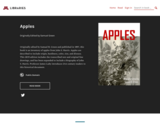
Short Description:
Originally edited by Samuel B. Green and published in 1897, this book is an inventory of apples from John S. Harris. Apples are described to include origin, hardiness, color, size, and disease. This 2019 edition includes the transcribed text and original line drawings, and has been expanded to include a biography of John S. Harris. Professor James Luby introduces 21st century readers to this historical document.
Word Count: 20069
ISBN: 978-1-946135-56-8
(Note: This resource's metadata has been created automatically by reformatting and/or combining the information that the author initially provided as part of a bulk import process.)
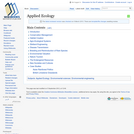
Applied ecology is a framework for the application of knowledge about ecosystems so that actions can be taken to create a better balance and harmony between people and nature in order to reduce human impact on other beings and their habitats.
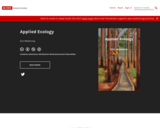
About this book
Origin story
I (Erin) began this book project after participating in the Open Pedagogy Incubator hosted by the NC State University Libraries in 2020, with the goal of making my course materials – and information about Applied Ecology – more broadly accessible to students, educators, and the general public. Rather than impose my sole voice, perspective, and biases, I restructured my course assignments to enable student creation of the content you will encounter in this book. The assignments are open-ended and open-world, motivating students to collaborate with each other and to seek knowledge beyond the classroom, and thus embody core characteristics of the discipline of Applied Ecology as well as Open Education and Universal Design for Learning. I hope that by centering student voices and by highlighting diverse scientists, research systems and ecosystems, this work empowers the reader and highlights the relevance of Applied Ecology in our everyday lives.
Intended use
This book is formatted to provide information about key ecological principles, concepts, and processes, explored and applied across various contexts. The text can be used as a foundational or supplementary text for ecology courses, or as a standalone reference for students in formal academic settings or beyond.
The Vocabulary terms at the beginning of each chapter are listed in the order that students will encounter them while reading the blog-style summary for that chapter. The Glossary lists all terms in the entire book in alphabetical order, for quick reference as needed.
We have provided an appendix with skeletal outlines that students can use to guide their notetaking. I also intend to compile a companion volume for educators, containing templates for each assignment used to guide the student works presented here.
Accessibility
We use sans-serif fonts to facilitate readability in digital format and by readers who are neurodivergent. We also support screen readership through alt-text images.
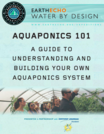
In this curricular guide, middle school students learn about an alternative farming technique that addresses water use in agricultural farming, the environmental impacts of fish farms, and urban development and population growth. This guide promotes 21st-century skills by engaging students in the history of aquaponics through various texts; improving their communication skills by explaining how an aquaponics system works; and engineering your own classroom aquaponics unit through an interactive design challenge!
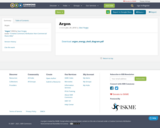
Argon

The Assessment of Authentic Learning Rubric focuses on the areas of agency and authenticity, concepts derived from the Student as Producer and Social Pedagogies frameworks. The rubric consists of five areas: learning tasks, learning process, social core, learning assessments, and lifelong learning. Each of the five areas contains statements that course designers can use to evaluate their course/s. Instructors may elect to use the rubric as a self-evaluation tool or might elect to work through it with support from an instructional designer. The rubric can be used for course taught in a variety of modalities including online, hybrid, and face-to-face.
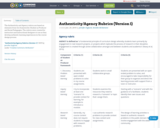
The Authenticity and Agency rubrics are based on elements from two frameworks: Student as Producer and Social Pedagogies. The rubrics were created for instructors and instructional designers to use as they develop authentic learning experiences in the course design process.
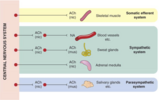
Basic overview of the Autonomic Nervous system along with their respective receptors and neurotransmitters.
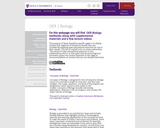
OER | Biology Overview:
On this webpage you will find OER Biology textbooks along with supplemental materials and a few lecture videos.
The purpose of these discipline-specific webpages is to display content that might be of interest to faculty who are considering adopting open educational resources for use in their classes. This list of content is by no means exhaustive. The nature of open educational resources is very collaborative and it is in that spirit that we encourage any comments about the content featured on this page or recommendations of content that are not already listed here.

Introduction/
Vertebrae/
Cervical vertebrae/
Axis/
Atlas/
Thoracic vertebrae/
Lumbar vertebrae/
Sacral and coccygeal vertebrae/
The rib cage/
Ribs/
Sternum/
Hyoid bone/
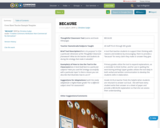
Cover Sheet
Teacher Example
Template
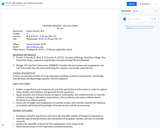
Syllabus and lab manual to accompany course using OpenStax Concepts of Biology (https://openstax.org/details/books/concepts-biology).
Course description: Centers on concepts of unity of living organisms including evolution, biochemistry, cell biology (morphology and physiology), genetics and development.
Lab manual begins on p. 11.

This course is designed to be taught using the textbook Cell Biology for Health Occupations, adapted from OpenStax.
(http://cnx.org/contents/Th3V8ojZ@3.1:zMTtFGyH@4/Introduction).

Syllabus for Microbiology course at Clackamas Community College.
Course Description:
An introductory microbiology lab course required for health science and science majors. Includes characteristics, physiology and growth requirements of
microorganisms, interactions between humans and microorganisms, immunology, infection, and principles of microbial control. This course emphasizes critical thinking and analytical skills in a collaborative laboratory environment.

Word Count: 12858
(Note: This resource's metadata has been created automatically by reformatting and/or combining the information that the author initially provided as part of a bulk import process.)
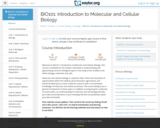
This course is designed for students who want to learn about and appreciate basic biological topics while studying the smallest units of biology: molecules and cells.
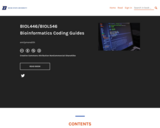
This textbook is a collection of technology guides to help students understand the technical aspects of bioinformatics.

Word Count: 6578
(Note: This resource's metadata has been created automatically by reformatting and/or combining the information that the author initially provided as part of a bulk import process.)